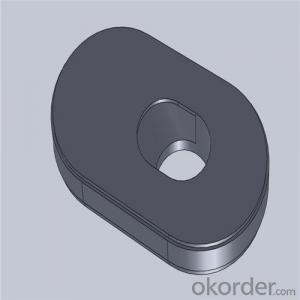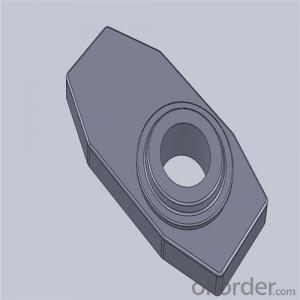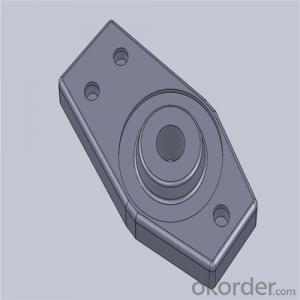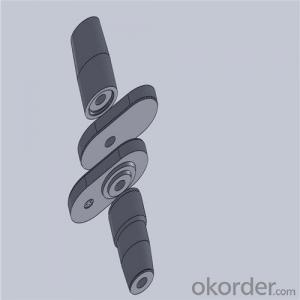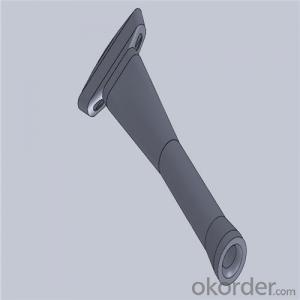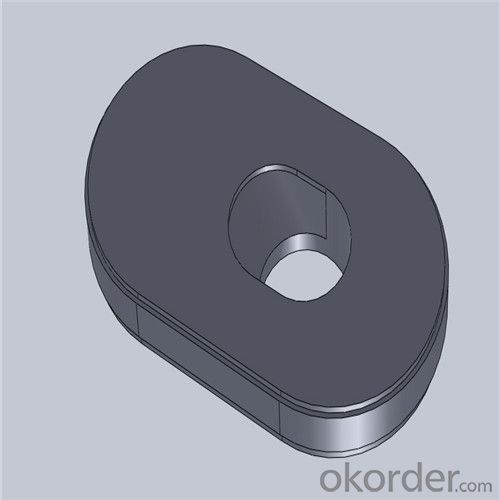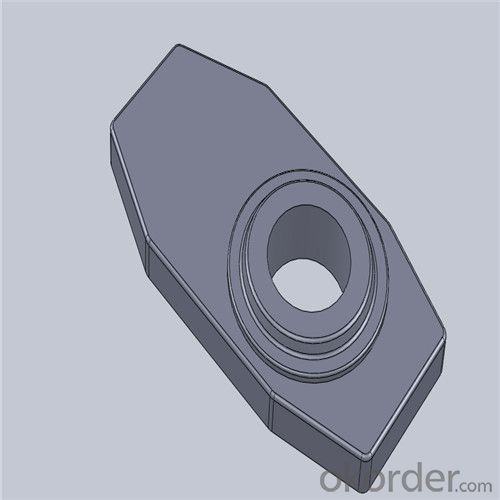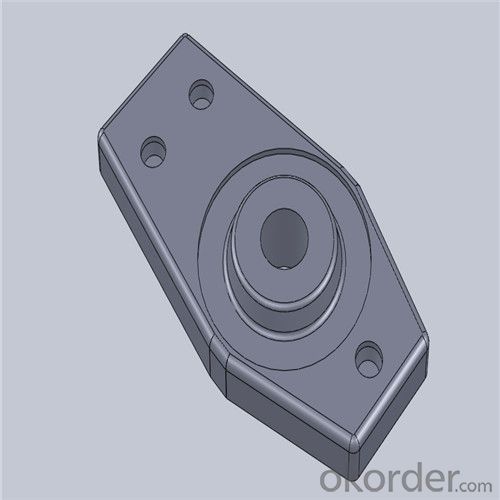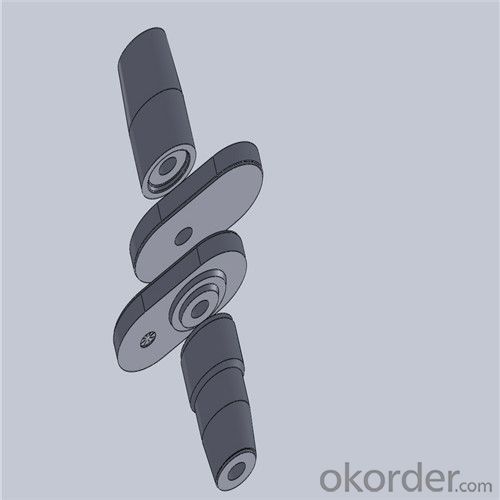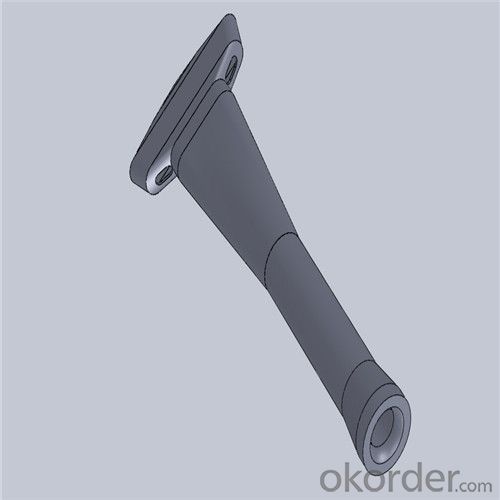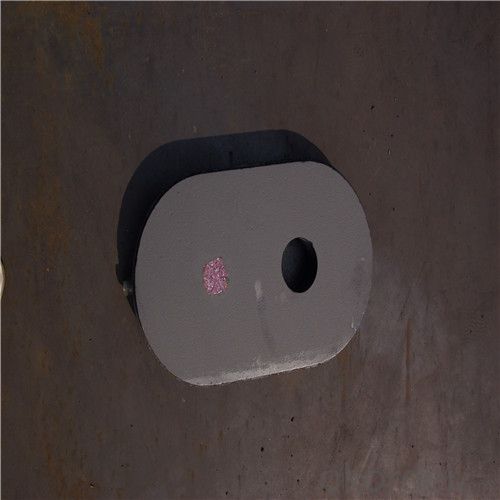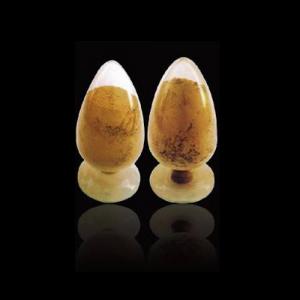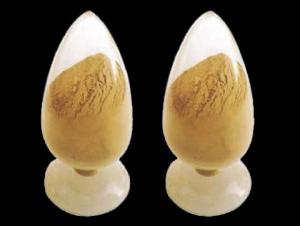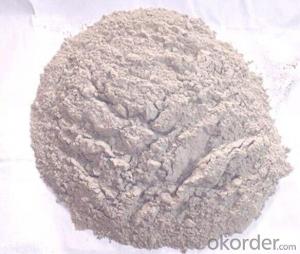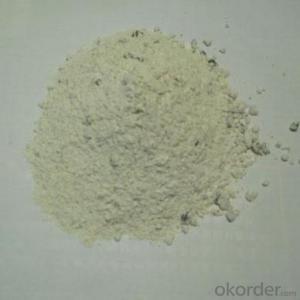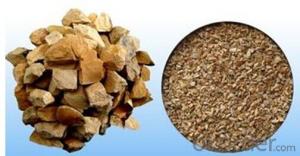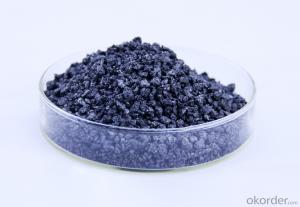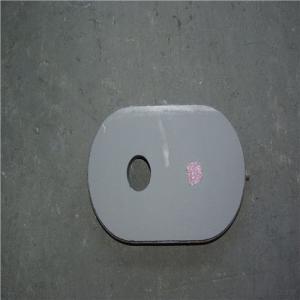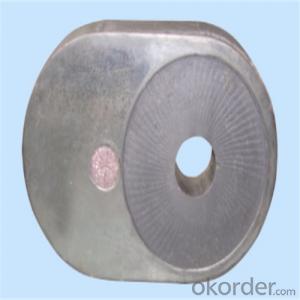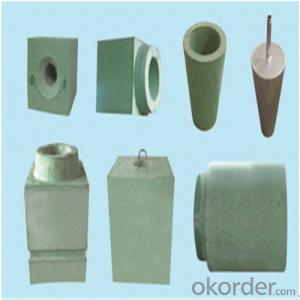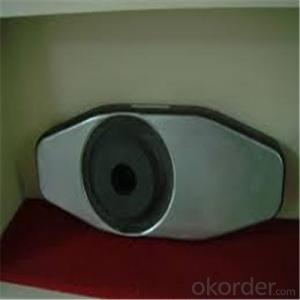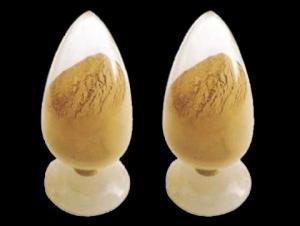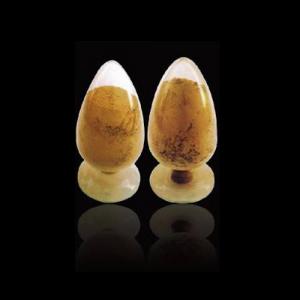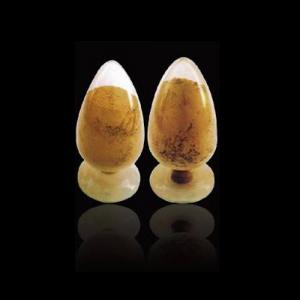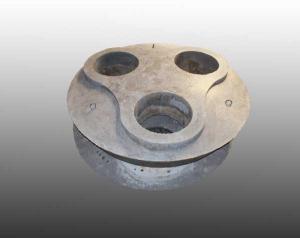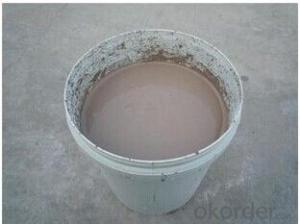Monolithic Refractories High Performance & Temperature Ladle Slide Gate for Iron and Steel Industry
- Loading Port:
- Shanghai
- Payment Terms:
- TT OR LC
- Min Order Qty:
- 100 pc
- Supply Capability:
- 1000 pc/month
OKorder Service Pledge
OKorder Financial Service
You Might Also Like
Quick Details for High Performance Refractory Ladle Slide Gate
| Place of Origin: | China (Mainland) | Shape: | Plate | Material: | Alumina Block |
| SiO2 Content (%): | N/A | Al2O3 Content (%): | 80-90% | MgO Content (%): | N/A |
| CaO Content (%): | N/A | Refractoriness (Degree): | 1770°< Refractoriness< 2000° | CrO Content (%): | N/A |
| SiC Content (%): | N/A | Model Number: | CS80 | Brand Name: | |
| Product name: | High performance refractory ladle slide gate | Model No.: | cs80 | Brand name: | CMAX |
| Quality: | Al-C or Al-Zr-C | Service life: | 4-6 heats | Apparent porosity: | 7% Max |
| Bulk density:: | 3.1 MIN | C.C.S: | 120MPA | MOQ: | 100 pcs for trial |
| Delivery time: | 60 working days upon receipt of deposit |
Packaging & Delivery
| Packaging Details: | Inner carton packing, outer wooden case suitable for long term sea shipping |
| Delivery Detail: | three months working days upon receipt of deposit |
Specifications
Surface flatness less than 0.05mm
High mechanical strength
Erosion resistance
Oxidation resistance
Thermal shock stability
Using the raw materials of tabular alumina, zirconia-corundum, carbon and other high-grade additives, after sintering to obtain characteristics of oxidation resistance, scour strength, erosion resistance, thermal shock resistance, shape stable and long service life, made our products the preferred materials for the large and medium-sized steel ladle, refining ladle, series of alloy steel ladle, and tundish. Our high performance sintering sliding gates include alumina carbon , Al2O3-ZrO2-C, etc, can meet the needs of different steel grade.
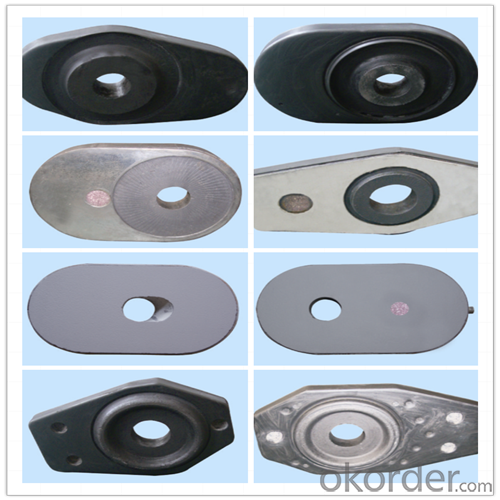
General Chemical Analysis for refractory ladle slide gate :
slide gate plate widely including Alumina carbon and Alumina Zirconia Carbon slide gate plate, MgO and MgO-spinel slide gate plate,nonoxides bonding slide gate plateand unburned slide gate plate.
Alumina -Zirconia-Carbon material
| Al-Zr-C Material | |||||
| Al2O3 | C | ZrO2 | Apparent porosity | Bulk density | C.C.S |
| (% minm) | (% minm) | (% minm) | (% max) | (gm./cc minm) | (MPa minm) |
| 85 | 3 | 5 | 7 | 3.1 | 120 |
| 85 | 3 | 4 | 7 | 3.1 | 120 |
Composite type: Al-Zr-C for working line, outer Al-C material
| Al-Zr-C & Al-C Material | ||||||
| Al2O3 | C | ZrO2 | Apparent porosity | Bulk density | C.C.S | |
| (% minm) | (% minm) | (% minm) | (% max) | (gm./cc minm) | (MPa minm) | |
| Inner side (Working face) | 85 | 3 | 4 | 7 | 3.1 | 120 |
| Outside | 90 | 3 | 0 | 9 | 3 | |
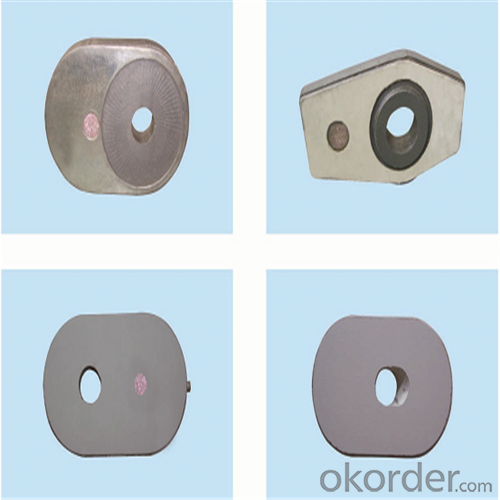
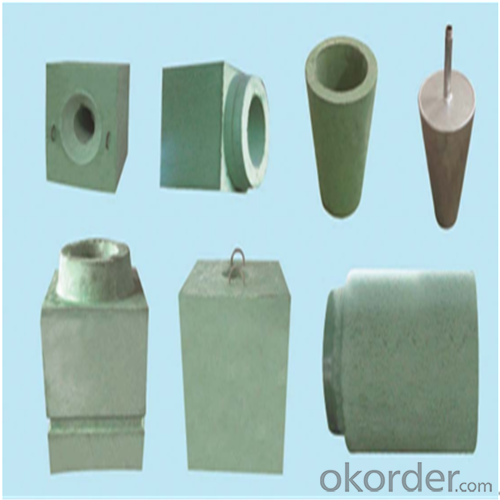
Other Products
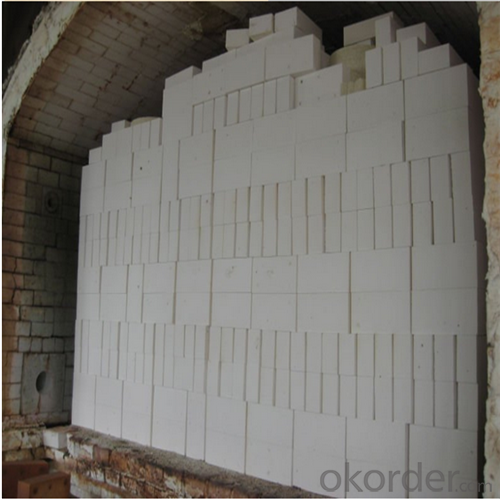
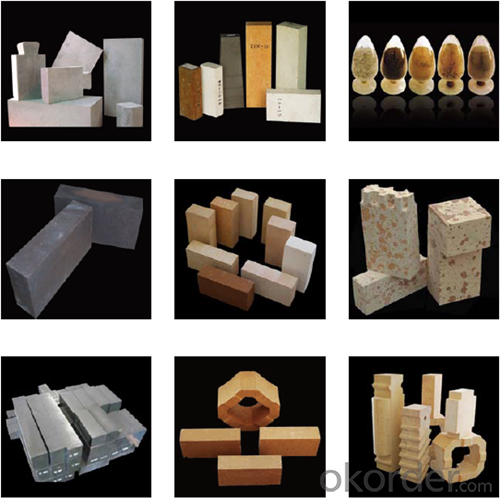
About us
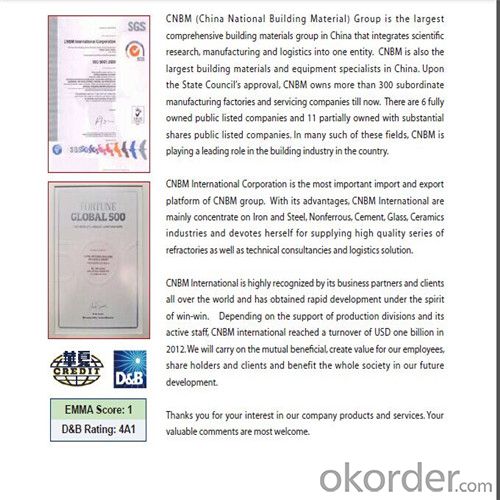
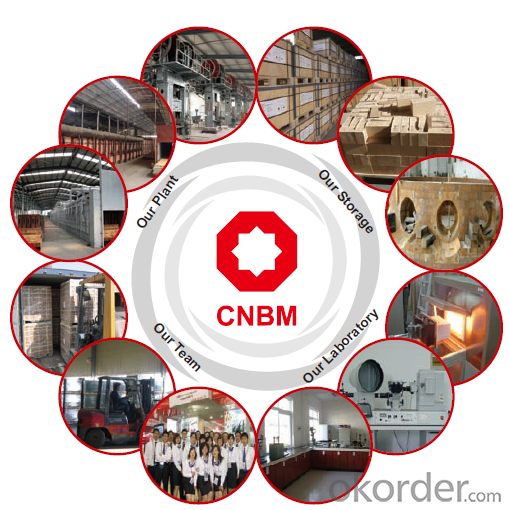
Sample is on your request.
Welcome to visit our factory~
- Q: In iron and steel industry, the main raw materials for blast furnace ironmaking are iron ore, coke and limestone. What's the use of limestone here?
- Calcium oxide absorbs sulfur dioxide and prevents it from polluting the air.
- Q: How do monolithic refractories contribute to the overall efficiency of ladles and tundishes?
- There are several ways in which monolithic refractories greatly improve the effectiveness of ladles and tundishes. Initially, the exceptional thermal insulation properties of monolithic refractories are well-known. By lining the ladles and tundishes with these refractories, heat loss is minimized, resulting in reduced energy consumption and improved thermal efficiency. This insulation capability also helps in maintaining a consistent temperature within the ladles and tundishes, which is vital for the proper casting and solidification of molten metal. Furthermore, monolithic refractories provide excellent resistance to thermal shocks and chemical corrosion. Ladles and tundishes are exposed to extreme temperatures and harsh chemical environments due to their contact with molten metal and various fluxes or additives. The use of monolithic refractories ensures that the ladles and tundishes have a longer lifespan by preventing cracking, spalling, or erosion caused by these harsh conditions. As a result, there is less downtime for maintenance and replacement, leading to increased overall efficiency. Moreover, the flexibility and ease of installation of monolithic refractories contribute to the efficiency of ladles and tundishes. Unlike traditional brick lining, monolithic refractories can be easily shaped and installed in different sizes and forms. This versatility allows for better customization and optimization of ladles and tundishes. This adaptability helps to improve the flow dynamics of molten metal, reducing turbulence, and enhancing the overall casting process efficiency. In conclusion, monolithic refractories significantly enhance the efficiency of ladles and tundishes through their exceptional thermal insulation properties, resistance to thermal shocks and chemical corrosion, and flexibility in installation. By reducing heat loss, extending the lifespan, and optimizing the casting process, monolithic refractories make a significant contribution to the overall efficiency and productivity of ladles and tundishes in the metal industry.
- Q: What are the advancements in monolithic refractory technology for the iron and steel industry?
- There have been several advancements in monolithic refractory technology for the iron and steel industry. One significant advancement is the development of low-cement castables, which have improved high-temperature strength, thermal shock resistance, and erosion resistance compared to conventional castables. Another advancement is the introduction of ultra-low cement castables, which offer even higher strength and improved resistance to spalling and alkali attacks. Additionally, the use of advanced bonding systems and additives has led to the development of self-flowing castables, making installation easier and more efficient. These advancements have greatly improved the performance and longevity of refractory linings in iron and steel industry applications.
- Q: How are monolithic refractories installed and repaired in iron and steel plants?
- Monolithic refractories are essential components in iron and steel plants, as they provide high-temperature resistance and insulation. They are commonly used in various applications, such as lining furnaces, ladles, and other equipment that come into contact with molten metal. The installation of monolithic refractories in iron and steel plants typically involves several steps. First, the surface that will receive the refractory material must be prepared by removing any existing refractories or contaminants. This can be done through mechanical methods, such as sandblasting, or chemical cleaning processes. Next, the monolithic refractory material is mixed with water or a suitable binder to form a workable consistency. This mixture is then applied to the prepared surface using various techniques, such as gunning, casting, or troweling. Gunning involves using a high-pressure gun to spray the refractory material onto the surface, while casting involves pouring the mixture into a mold. Troweling is a manual method that involves spreading the refractory material with a trowel. Once the refractory material is applied, it needs to be properly cured or dried. This is usually achieved by allowing the material to air dry or by using controlled heating. The curing process is crucial to ensure the refractory material develops the desired properties, such as strength and resistance to thermal shock. In terms of repairs, monolithic refractories in iron and steel plants can deteriorate over time due to the harsh operating conditions. When repairs are needed, damaged or worn-out areas of the refractory lining must be identified. This can be done through visual inspection or non-destructive testing techniques. The repair process typically involves removing the damaged refractory material by chipping, drilling, or cutting. The surface is then prepared as mentioned earlier, and a new batch of monolithic refractory material is applied to restore the lining. The repair material should be compatible with the existing lining and provide similar properties to ensure the overall integrity of the refractory structure. It is important to note that the installation and repair of monolithic refractories in iron and steel plants require skilled personnel with knowledge of refractory materials and installation techniques. Additionally, proper safety measures should be followed to protect workers from potential hazards, such as exposure to high temperatures, dust, and chemicals. Regular inspection and maintenance are also crucial to identify any potential issues early on and prevent major failures that could impact production and safety.
- Q: How do monolithic refractories perform in rotary kiln applications?
- Monolithic refractories perform exceptionally well in rotary kiln applications due to their high thermal shock resistance, excellent chemical resistance, and superior strength at high temperatures. Their ability to withstand extreme heat and harsh chemical environments makes them ideal for lining the interior of rotary kilns. Additionally, monolithic refractories offer easy installation and maintenance, ensuring efficient and reliable kiln operations.
- Q: How do monolithic refractories improve the efficiency of ladle and tundish purging furnaces?
- There are several ways in which monolithic refractories play a crucial role in enhancing the efficiency of ladle and tundish purging furnaces. To begin with, monolithic refractories possess outstanding thermal insulation properties, enabling them to retain heat within the furnace and minimize heat loss to the surroundings. This results in the furnaces being able to operate at higher temperatures, leading to improved efficiency. The higher temperatures facilitate better steel refining, faster heating and purging of the ladle and tundish, and overall increased productivity. Furthermore, monolithic refractories offer superior resistance to thermal shock. The continuous flow of molten metal in purging furnaces, particularly in ladles and tundishes, subjects the refractories to rapid heating and cooling cycles. Traditional refractories may crack or fail under such thermal cycling, resulting in reduced efficiency and additional downtime for repairs. However, monolithic refractories can withstand these extreme temperature changes, ensuring uninterrupted operation and minimizing the need for frequent maintenance. In addition, monolithic refractories exhibit excellent resistance to chemical attacks from molten metals and slag. During the purging process, ladles and tundishes come into contact with aggressive materials that can erode the refractory lining. Monolithic refractories are specifically designed to endure these harsh environments, preventing erosion and prolonging the lifespan of the furnaces. This resistance to chemical attacks not only enhances efficiency by minimizing refractory wear but also guarantees the production of high-quality steel with reduced impurities. Lastly, monolithic refractories offer great versatility in terms of installation and repair. Unlike traditional refractories that necessitate complex bricklaying techniques, monolithic refractories can be easily shaped and installed, enabling faster and more efficient lining construction. Additionally, monolithic refractories can be effortlessly repaired or patched, reducing downtime and ensuring continuous operation of the furnace. In conclusion, monolithic refractories significantly enhance the efficiency of ladle and tundish purging furnaces through their excellent thermal insulation, resistance to thermal shock and chemical attacks, as well as ease of installation and repair. These properties enable higher operating temperatures, reduced heat loss, increased productivity, and extended furnace lifespan, ultimately improving the overall efficiency and performance of the steelmaking process.
- Q: Can monolithic refractories be used for the lining of ladle refining furnaces and VOD converters?
- Indeed, ladle refining furnaces and VOD converters can benefit from the utilization of monolithic refractories. These refractories, which consist of a single, uniform material, can be molded and installed in various settings, particularly those involving extreme temperatures such as ladle refining furnaces and VOD converters. The advantage of monolithic refractories lies in their simplicity of application and repair. They can be either cast or gunned in place, offering flexibility in terms of lining design and installation. The lining of ladle refining furnaces and VOD converters requires materials capable of withstanding high temperatures, chemical reactions, and mechanical stresses. Monolithic refractories are well-suited for these demanding applications due to their exceptional resistance to thermal shock and chemical attack. In the case of ladle refining furnaces, monolithic refractories are used to line the vessel in which molten metal is contained and processed. By doing so, these refractories help to maintain the desired temperature and safeguard the ladle from the corrosive effects of both molten metal and slag. Additionally, they serve as insulation to minimize heat loss and enhance energy efficiency. VOD converters, on the other hand, are employed in the steelmaking process to reduce the carbon content of molten steel. Monolithic refractories play a crucial role in lining the converter's vessel and ensuring the maintenance of the required temperature for the decarburization reaction. Furthermore, they provide protection against the corrosive impact of molten metal and slag, thereby guaranteeing the converter's durability and performance. To summarize, monolithic refractories possess outstanding characteristics that make them an excellent choice for lining ladle refining furnaces and VOD converters. Their versatility, ease of installation, and ability to withstand high temperatures and chemical attack render them perfectly suited for these critical applications within the steel industry.
- Q: What are the recommended installation techniques for monolithic refractories?
- The recommended installation techniques for monolithic refractories typically involve proper surface preparation, mixing of refractory materials, and precise application. It is crucial to clean and remove any loose debris from the substrate before installation. The refractory materials should be mixed thoroughly with the appropriate water content to achieve the desired consistency. It is recommended to use vibration or tamping techniques during application to remove air pockets and ensure proper compaction. Careful curing and drying processes should be followed to prevent thermal shock and achieve optimal performance.
- Q: How do monolithic refractories improve the performance of ladles and tundishes?
- The performance of ladles and tundishes is significantly improved by monolithic refractories in various ways. Firstly, these vessels are thermally insulated by monolithic refractories, which act as a barrier against heat loss and help maintain the desired temperature. This insulation reduces energy consumption and minimizes heat loss. Secondly, monolithic refractories offer excellent resistance to chemical corrosion and erosion. When ladles and tundishes come into contact with molten metal and fluxes, they can be severely corroded and eroded. However, the use of monolithic refractories protects against chemical attacks and extends the lifespan of these vessels. This saves costs associated with frequent repairs or replacements and ensures their integrity and safety. Furthermore, monolithic refractories provide superior mechanical strength and structural stability. Ladles and tundishes must withstand the weight of molten metal and the stresses caused during pouring and handling. With high mechanical strength, monolithic refractories can withstand these loads, maintaining their shape and integrity. This reduces downtime and increases productivity in the steelmaking process. Moreover, monolithic refractories offer flexibility in design and installation. They can be shaped and applied in various configurations, allowing customization to meet the specific requirements of ladles and tundishes. This flexibility ensures a better fit and improves the overall efficiency of the refractories, ultimately enhancing the performance of the vessels. In conclusion, monolithic refractories enhance the performance of ladles and tundishes by providing improved thermal insulation, resistance to chemical corrosion and erosion, increased mechanical strength, and flexibility in design and installation. These benefits contribute to the longevity, efficiency, and cost-effectiveness of ladles and tundishes in steelmaking operations.
- Q: How do monolithic refractories perform in torpedo ladle applications?
- Due to their excellent performance and durability, monolithic refractories are commonly used in torpedo ladle applications. Torpedo ladles are utilized in the steelmaking process to transport and pour molten metal from the blast furnace to the steelmaking furnace. Also known as unshaped refractories, monolithic refractories are made from a single material and can be applied as a cohesive mass, making them highly versatile and easy to install in the torpedo ladle. In torpedo ladle applications, monolithic refractories offer numerous advantages. Firstly, they possess high heat resistance, enabling them to endure the extreme temperatures and thermal shocks experienced during the transfer and pouring of molten metal. This ensures that the refractories do not crack or fail under these harsh conditions. Additionally, monolithic refractories exhibit excellent corrosion resistance properties, which is imperative in torpedo ladles where the molten metal can be highly corrosive. They can withstand the aggressive chemical environment and prevent chemical reactions that could result in refractory deterioration. Moreover, monolithic refractories possess good thermal insulation properties, reducing heat loss from the molten metal and promoting energy efficiency. This helps to maintain the desired temperature of the metal, ensuring optimal steelmaking conditions. Furthermore, monolithic refractories offer strong mechanical strength and resistance to abrasion, making them highly suitable for torpedo ladle applications where the refractory lining is subjected to mechanical stress and wear. Overall, monolithic refractories perform exceptionally well in torpedo ladle applications due to their high heat resistance, corrosion resistance, thermal insulation properties, and mechanical strength. They can endure the extreme conditions and provide a reliable and long-lasting lining for torpedo ladles in the steelmaking industry.
Send your message to us
Monolithic Refractories High Performance & Temperature Ladle Slide Gate for Iron and Steel Industry
- Loading Port:
- Shanghai
- Payment Terms:
- TT OR LC
- Min Order Qty:
- 100 pc
- Supply Capability:
- 1000 pc/month
OKorder Service Pledge
OKorder Financial Service
Similar products
Hot products
Hot Searches
Related keywords
